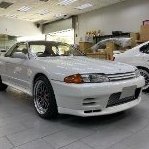Hcr32 - Nelsonmx's Lightweight Track/street Build
Announcements
-
Similar Content
-
Latest Posts
-
Hi all, so don’t get to get under my gtr much in Hong Kong. Used to get under my cars all the time in the states. anyway my garage took out my hks silent hi low cat and was wondering does it just bolt back into the system with new gaskets? I’m guessing yes. Photo attached. Thanks
-
By DraftySquash · Posted
Hi everyone, Wondering if anyone has any recommended shops in West Melbourne to get my front bar prepped and painted. I'm getting a new front bar and would like to get a professional to do the paintwork for me. Anyone had any good previous experiences with any shops? I know I could do the prep myself, but I do not trust myself to be that good, and the front bumper deserves a quality job 🤣 PS: Pic attached because she looks cleeeeean with a cut and polish ❤️ -
Anyone had issues with front bearing or hubs going sooner than they should? Had my car 6 months, only just done 25000km and pretty sure the front right wheel bearing is shot.....
-











Recommended Posts
Create an account or sign in to comment
You need to be a member in order to leave a comment
Create an account
Sign up for a new account in our community. It's easy!
Register a new accountSign in
Already have an account? Sign in here.
Sign In Now